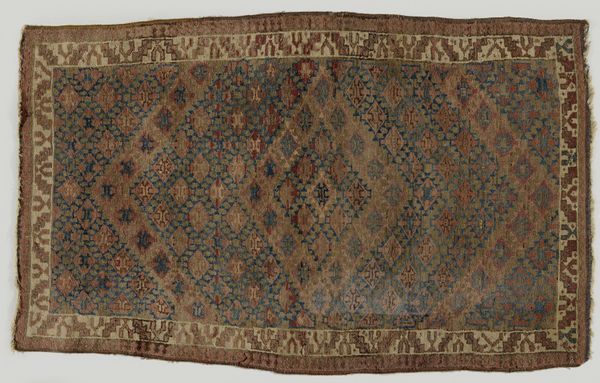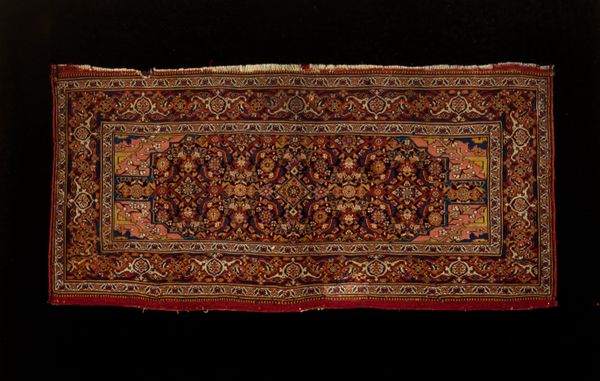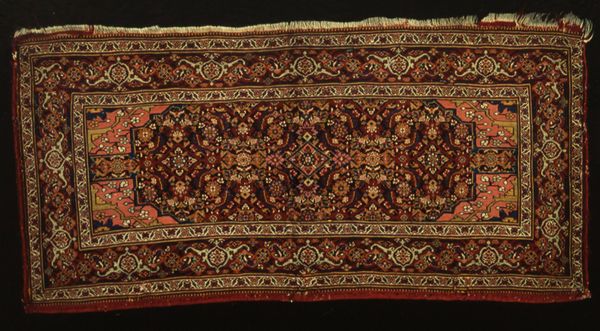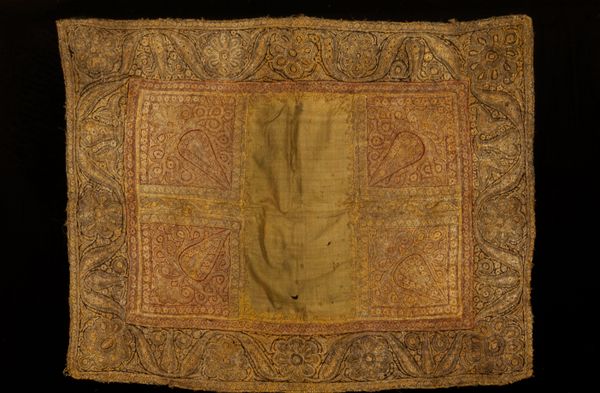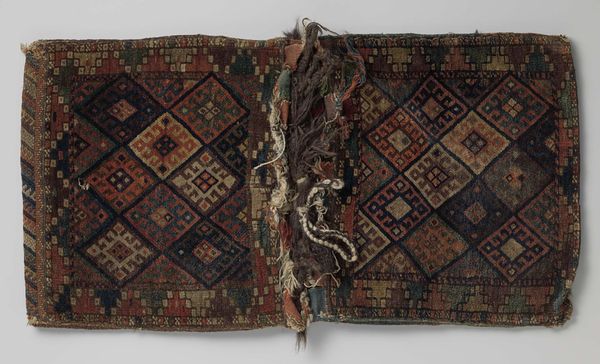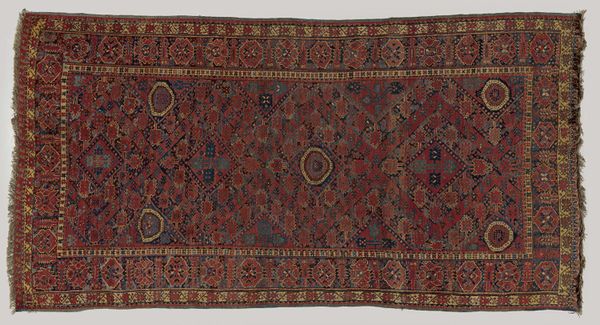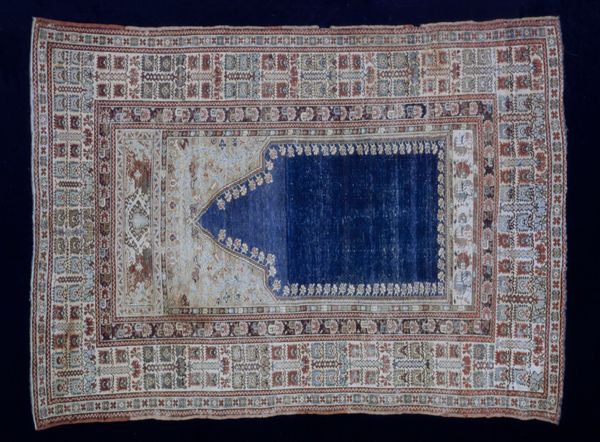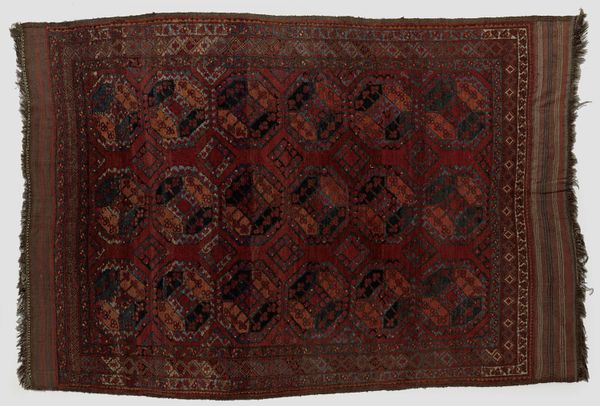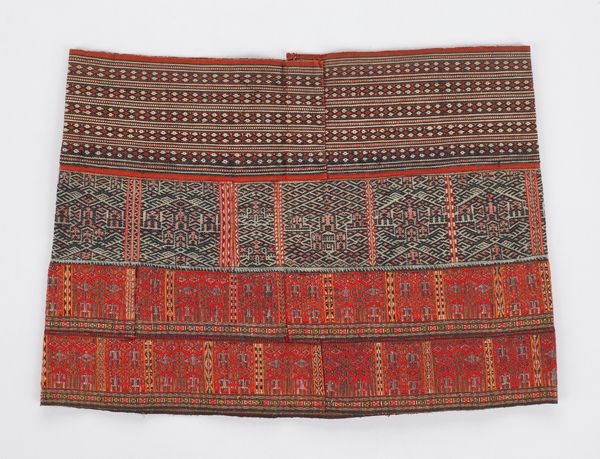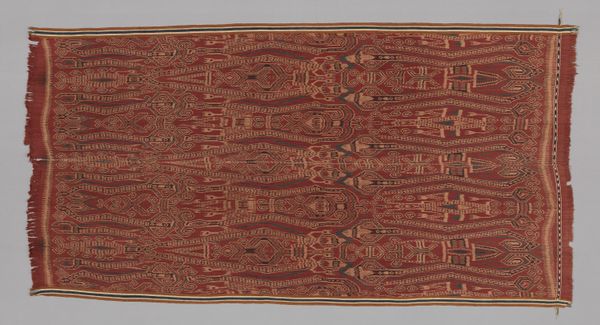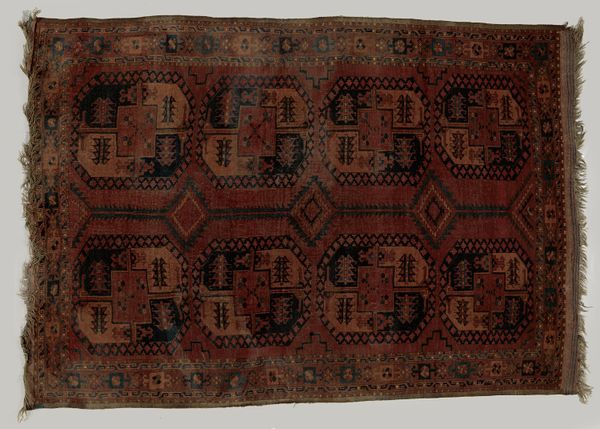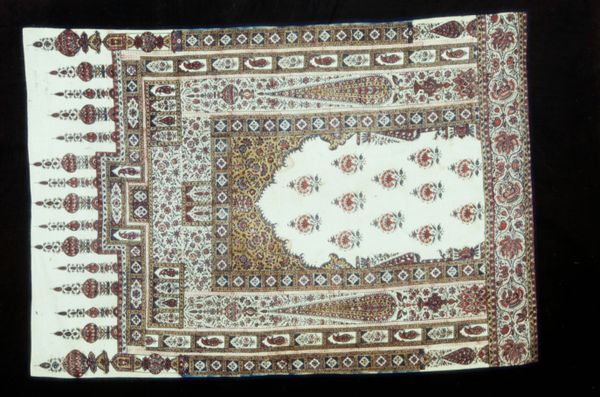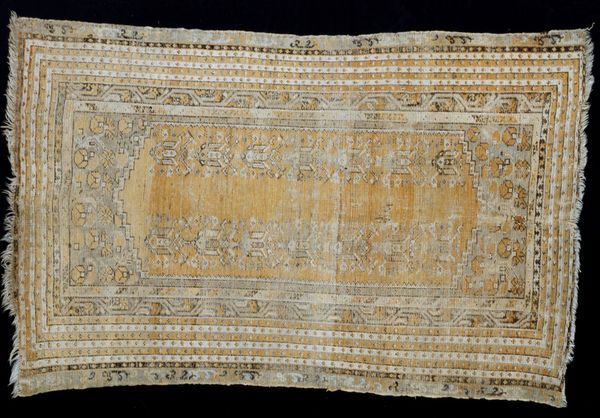
fibre-art, weaving, textile
#
fibre-art
#
sculpture
#
weaving
#
textile
Copyright: Public Domain
Curator: Before us we have a textile work entitled "Saddle bags", estimated to be from the 19th century and part of the Minneapolis Institute of Art's collection. Editor: The immediate impact is one of remarkable texture. The weaving projects a very tactile and intricate sensibility, despite the slightly faded tonality and apparent wear-and-tear. Curator: The materiality is significant, of course. It’s composed of silk and other textile fibers, woven into an elaborate pattern. Notice the near perfect mirroring of design across both sides, creating an equilibrium, reinforcing its function. Editor: Indeed, and look closer, this mirroring of the woven bags is almost obsessively precise; yet, despite its visual symmetries, the material reveals evidence of tangible, physical labor. We see repairs, worn threads, a story embedded into the cloth itself of practical use. Curator: The geometrical structure is noteworthy. Rhomboid patterns dominate the panels, framed by borders that seem to evoke an orientalist aesthetic through its abstract motifs. It also presents, formally, a discourse on negative and positive space, where absence in the gaps gives the visual structure more weight. Editor: From a production perspective, it is quite exciting; I wonder who wove this? How were the dyes sourced and fixed into the silk? Were these luxury goods, items made with a slow process, versus the efficiency of contemporary production? I can't help but see it as a cultural and historical document in its medium. Curator: Your points certainly amplify the work’s depth. I suppose I was keen to emphasize its pattern and form. Both its symmetrical exactness and internal asymmetries of production yield unique interpretations. Editor: Yes, that blend makes the work far richer, I agree. Its use as something for transport that also tells a unique cultural story via design. It’s far more fascinating now!
Comments
No comments
Be the first to comment and join the conversation on the ultimate creative platform.

